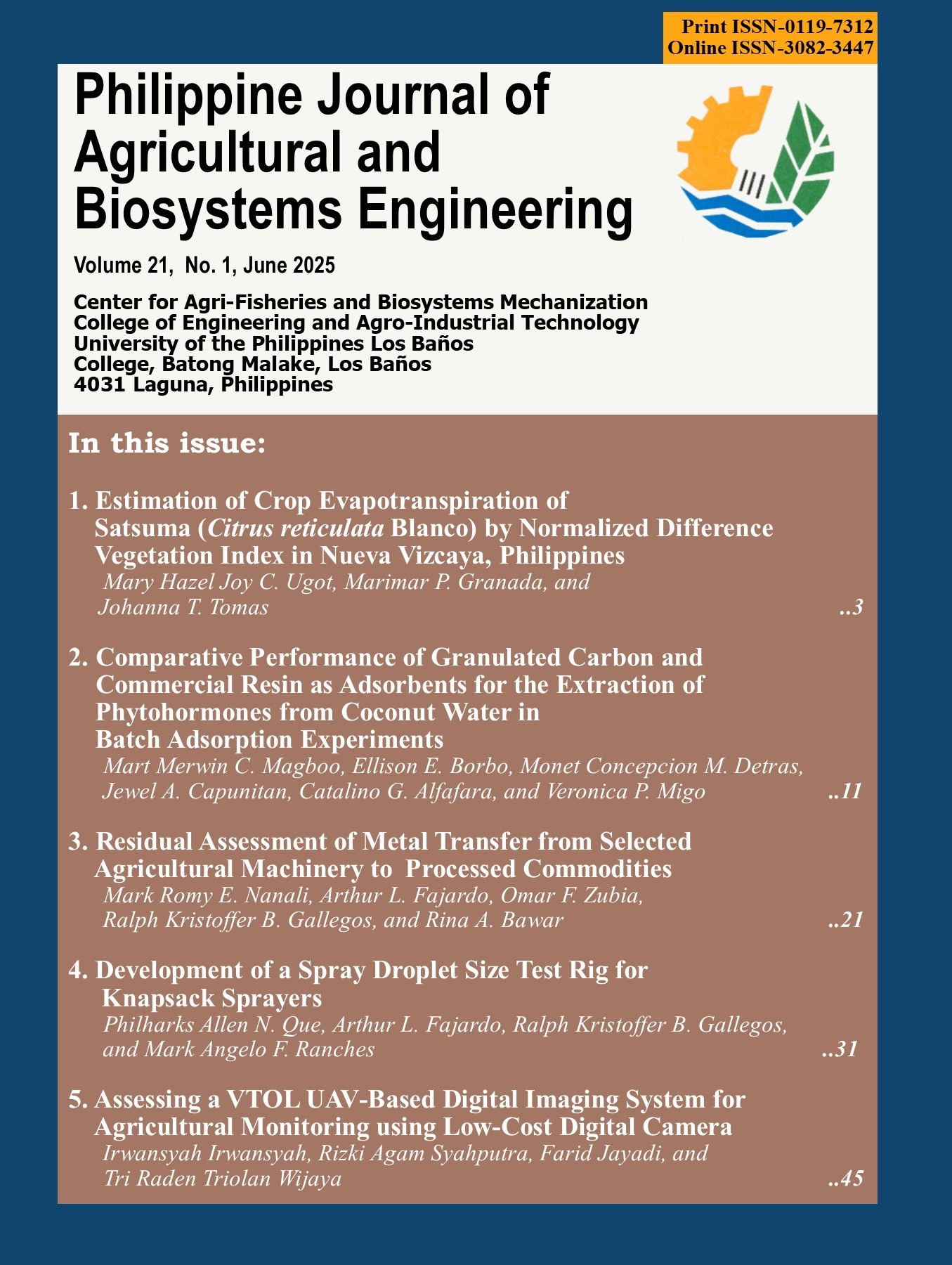Residual Assessment of Metal Transfer from Selected Agricultural Machinery to Processed Commodities
Abstract
Stainless steel, particularly grades such as AISI 304SS and 316SS, is extensively used in food processing due to its excellent corrosion resistance, durability, and ease of cleaning, which are essential for maintaining food safety and hygiene standards. However, the verification of food-grade materials has rarely been evaluated. This study investigates the potential transfer of metal residues from food-grade machines specifically a calamansi juice extractor, and coffee grinder to processed agricultural products such as calamansi juice, and coffee. An X-ray Fluorescence (XRF) analyzer was used to determine the metal composition of the processing equipment. Levels of iron (Atomic Absorption Spectrophotometry, AAS) and lead (Inductively Coupled Plasma-Optical Emission Spectroscopy, ICP-OES) in the processed products were determined. The results showed minimal presence of impurities. Levels of iron and lead in the final products remained below international safety standards, suggesting minimal contribution of processing equipment to metal residue content. By providing empirical data on the material composition of commonly used food-processing equipment, this research contributes to improving regulatory frameworks and guiding manufacturers in selecting appropriate materials. These findings support the development of safer, high-quality food-processing equipment, thereby enhancing food safety practices in the Philippine agricultural sector.


